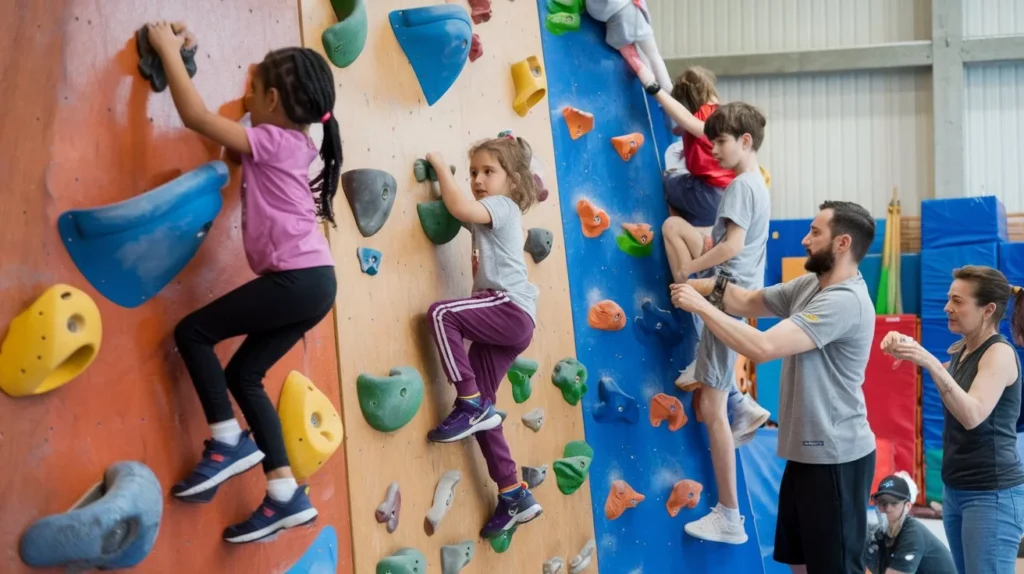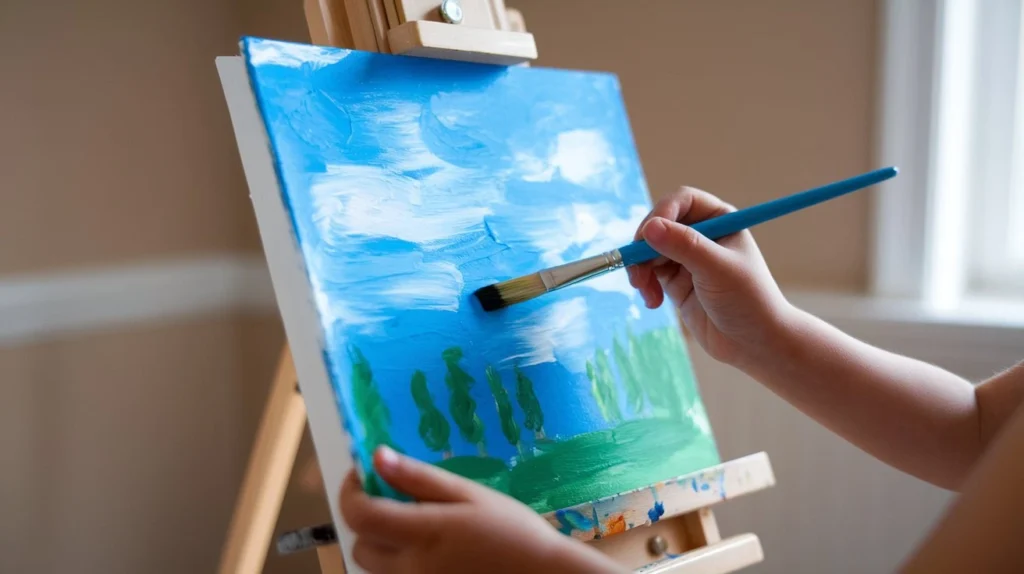Activities to Enhance the Development of Motor Skills in Children
Table of Contents
Motor skills play a critical role in children’s development, enabling them to perform everyday tasks such as walking, running, writing, and more. Both fine motor skills, which involve small muscle movements (like using hands), and gross motor skills, which involve larger muscle groups (like using legs and arms), are essential for children to navigate the world around them. Developing these skills is crucial for a child’s physical, cognitive, and emotional well-being. This article will explore various activities that can enhance motor skills in children, providing a detailed guide for parents, teachers, and caregivers.
The Importance of Motor Skill Development

Motor skills contribute significantly to children’s overall development, influencing their physical fitness, cognitive functioning, and social interactions. Children develop motor skills progressively as they grow, beginning with basic movements in infancy and advancing to more complex tasks in childhood. Here’s why motor skill development is vital:
- Physical health: Strong motor skills contribute to better coordination, strength, and endurance, which are essential for physical activities such as sports and exercise.
- Cognitive benefits: Motor skill development is closely linked to brain growth and cognitive functions like memory, attention, and problem-solving.
- Social skills: Through activities that enhance motor skills, children often engage in teamwork and cooperative play, boosting their ability to interact with peers.
- Independence: Fine motor skills are essential for tasks like writing, tying shoes, and feeding oneself, promoting autonomy.
Table 1: Motor Skill Development Milestones
| Age Group | Motor Skill Milestones |
|---|---|
| Infants (0-1 year) | Sitting up, crawling, standing, grasping objects |
| Toddlers (1-3 years) | Walking, running, throwing, stacking blocks |
| Preschoolers (3-5 years) | Hopping, skipping, cutting with scissors, drawing |
| School-aged children (6-12 years) | Riding a bike, playing sports, writing clearly |
Activities for Enhancing Gross Motor Skills

Gross motor skills are those that involve large muscle movements. These skills are crucial for balance, coordination, strength, and body control. Below are some fun and effective activities that help enhance gross motor skills in children.
1. Obstacle Courses
Creating an obstacle course indoors or outdoors can be a fun way to engage children’s gross motor skills. Courses can include jumping over objects, crawling under tables, running between cones, and balancing on beams. These activities improve coordination, balance, and spatial awareness.
2. Playing Catch
Simple games like throwing and catching a ball improve hand-eye coordination and balance. Encourage children to play catch with balls of different sizes to challenge their abilities. As they improve, you can increase the distance or use objects like beanbags or frisbees to keep the game exciting.
3. Riding Bikes or Scooters
Riding a bicycle or scooter not only strengthens leg muscles but also improves balance and coordination. For younger children, using a balance bike can be a great starting point before transitioning to a pedal bike.
4. Dancing
Dancing is an excellent way for children to develop their gross motor skills. It encourages coordination, rhythm, and muscle control. Try introducing simple dance routines or free-style dancing to a variety of music genres to keep it fun.
5. Playground Activities
Playground equipment such as swings, slides, monkey bars, and climbing structures are all designed to help children build strength and coordination. Swinging, for example, helps children develop core strength, while climbing structures enhance upper body strength and spatial awareness.
Table 2: Gross Motor Skill Activities and Benefits
| Activity | Motor Skills Targeted | Additional Benefits |
|---|---|---|
| Obstacle courses | Balance, coordination, agility | Improves problem-solving abilities |
| Playing catch | Hand-eye coordination, reflexes | Boosts social interaction |
| Riding bikes | Leg strength, balance, coordination | Enhances endurance and confidence |
| Dancing | Muscle control, rhythm, balance | Fosters creativity and self-expression |
| Playground activities | Upper body strength, balance, coordination | Encourages teamwork and cooperation |
Activities for Enhancing Fine Motor Skills

Fine motor skills involve the precise movements of small muscles, especially in the hands and fingers. These skills are essential for tasks like writing, buttoning shirts, and using utensils. Here are activities designed to enhance fine motor skills in children:
1. Play-Dough and Clay Molding
Playing with play-dough or clay is an excellent way to strengthen hand muscles and improve dexterity. Encourage children to roll, squeeze, and mold the dough into different shapes. This activity not only enhances fine motor control but also stimulates creativity.
2. Puzzles
Solving puzzles helps children refine their hand-eye coordination and spatial awareness. Puzzles with large pieces are great for younger children, while older children can work on more complex puzzles with smaller pieces.
3. Beading and Threading
Beading and threading activities, such as making bracelets or necklaces, require precision and control. Children must carefully thread beads onto a string, which strengthens their finger muscles and improves concentration.
4. Cutting with Scissors
Using safety scissors to cut paper helps children develop hand strength and coordination. Start with simple shapes and gradually progress to more intricate designs as the child’s skills improve. This activity also enhances focus and patience.
5. Drawing and Coloring
Encouraging children to draw, color, or trace helps improve their grip and hand control. It also fosters creativity and allows them to express their ideas visually. Children can progress from scribbling to drawing detailed shapes and pictures as their skills develop.
Table 3: Fine Motor Skill Activities and Benefits
| Activity | Motor Skills Targeted | Additional Benefits |
|---|---|---|
| Play-dough molding | Hand strength, finger dexterity | Boosts creativity and sensory development |
| Puzzles | Hand-eye coordination, spatial awareness | Enhances problem-solving skills |
| Beading/threading | Precision, hand control | Improves concentration and focus |
| Cutting with scissors | Hand strength, coordination | Develops patience and focus |
| Drawing/coloring | Grip, hand control, creativity | Fosters self-expression and focus |
Cognitive Benefits of Motor Skill Development
Motor skill development is not just about physical growth—it has a profound impact on cognitive abilities. Research shows that children who engage in regular physical activities that enhance motor skills tend to perform better academically. Here’s how motor skill development influences cognition:
- Memory and learning: Activities that involve movement, such as playing sports or completing puzzles, help improve memory retention and problem-solving skills.
- Attention and focus: Children who regularly engage in motor skill activities exhibit better attention and focus in the classroom.
- Executive function: Complex motor activities like dance routines or obstacle courses require children to plan, organize, and execute movements, thereby improving executive function.
FAQ: Motor Skills in Children
1. What are the key differences between gross motor skills and fine motor skills?
Gross motor skills involve large muscle movements, such as walking and jumping, while fine motor skills involve small, precise movements, like grasping and writing.
2. At what age should my child start developing motor skills?
Motor skill development begins in infancy. Babies start with gross motor skills like rolling over and progress to more refined fine motor skills like grasping objects.
3. How can I support my child’s motor skill development at home?
You can support motor skill development by engaging in activities such as playing catch, building with blocks, drawing, and creating obstacle courses.
4. Can screen time negatively affect motor skill development?
Excessive screen time can limit opportunities for physical activity, which may hinder the development of motor skills. It’s important to balance screen time with active play.
5. Are there specific toys or tools that can enhance motor skills?
Yes, toys such as building blocks, puzzles, play-dough, and bikes are excellent for developing motor skills.
Conclusion
The development of motor skills in children is a foundational aspect of their growth, affecting not only physical health but also cognitive and social abilities. Parents, educators, and caregivers can support motor skill development through a variety of engaging and fun activities that target both gross and fine motor skills. From obstacle courses and playground activities to beading and drawing, these activities lay the groundwork for strong physical and mental health. Encouraging motor skill development early in life sets the stage for lifelong benefits, including better coordination, academic success, and emotional well-being.
By integrating these activities into daily routines, parents can provide children with the tools they need to thrive in every aspect of their development. Moreover, fostering an environment that promotes physical activity and creativity helps children develop motor skills in a natural and enjoyable way.
References
- American Academy of Pediatrics. (2019). “The Importance of Motor Skill Development in Early Childhood.”
- National Association for the Education of Young Children (NAEYC). (2020). “Supporting Physical Development in Early Childhood.”
- Harvard Graduate School of Education. (2021). “The Connection Between Physical Activity and Cognitive Development.”
- Centers for Disease Control and Prevention (CDC). (2021). “Child Development Milestones.”
- Piaget, J. (1952). “The Origins of Intelligence in Children.”







